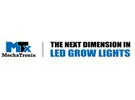As spring finally begins to take hold in Europe, it may seem distant, but in a few months, the plants for winter crops will be back in the greenhouse. And there are significantly more than in recent years. The North-West European tomato market is relighting. Not only are existing lamps being turned on, but further growth is also on the horizon.
 Lit cultivation at Hortipower, Belgium
Lit cultivation at Hortipower, Belgium
Increase
Recently, winter tomato cultivation, which involves harvesting between December and June using artificial lighting, has seen a significant increase. This trend continued until the winter of 2022/2023. The nearly complete cessation of winter cultivation had various causes, with the skyrocketing energy prices, partly due to the war in Ukraine, being the main one. The unprecedented rise in gas prices in 2021 and 2022 led many growers to turn off their lamps. Additionally, the tomato virus ToBRFV played a significant role. In illuminated cultivation, growing with a resistant variety is practically a requirement, as the costs are much higher, and the virus seems to have greater consequences for plants under stress.
However, Growers and sales organizations found it difficult to convey this story to buyers. Retailers and wholesalers did not guarantee prices, and many growers chose to turn off the lights and operate a traditional, unlit season. For example, the illuminated area in the Netherlands decreased from 800 to 100 hectares, and in Belgium, less than 10 hectares were illuminated.
Long process
When that choice was made, it was already clear that it wouldn't turn around after one season: To get back on the same cultivation schedule takes at least two seasons. By prematurely ending the cultivation to switch to an unlit season, a grower loses two production months. To switch back to illuminated cultivation the following year, you have to shorten another season by several months. Most companies simply couldn't afford that.
Despite this, the market seemed to be turning slightly last winter. Energy prices remained more stable, and more resistant varieties were available. It was estimated that about 40% of the Dutch area of 800 hectares, around 300–400 hectares, again produced tomatoes from illuminated cultivation. This winter, the trend is only continuing, and it is likely that the entire illuminated area will be harvested.
LED lighting
Part of this is because most of the area is now equipped with LED lighting, requiring much less electricity than the previously used HPS lamps. In the Netherlands, substantial subsidies are available, making the conversion to or installation of LED lighting an attractive option. "We see fewer and fewer HPS lamps, still some hybrid installations combining HPS with LED. When it comes to Dutch tomatoes, around 200 hectares in total," estimates Koen Vangorp of Mechatronix. "Over time, those will also be replaced."
The company has grown in recent years to become one of the largest suppliers of LED lighting. And that growth is not over yet: Koen expects that in addition to the replacement market for HPS lamps, a new wave of illuminators will emerge. "Recently, much of the growth in the tomato sector has come from companies switching from HPS to LED. Now we also see many non-illuminated growers showing interest in installing lighting. That was hardly the case lately due to high energy prices." He expects that the Netherlands will exceed 1,000 hectares of illuminated cultivation in the coming years.
Poor weather
Partly due to poor weather in Southern Europe, demand for and prices of products from Northern Europe were good. "In recent years, more and more has been fixed on contract. This year, too, much is already fixed. There is demand for products from the Netherlands, Belgium, but also from German retailers. This is also due to the quality of imported products in the past two winters, which was not great. Prices for winter production were good, and especially with the available subsidies, the choice is easier to make."
Referring to the developments in Spain, he says: "If you see how Almeria struggles with problems regarding water and heat, it goes even further. Ultimately, there is only a limited strip from which year-round delivery can be made. In Europe, but also in North America, you can draw that line. Far south, the thermal management becomes problematic, and far north, there is too much light. It's a relatively narrow strip where it has to happen."
This strip also extends through the United Kingdom, where retailers have faced empty shelves in recent years. Consumers in certain supermarkets were only allowed to take a limited number of tomatoes and cucumbers. There, too, the area of illuminated products is expanding. For example, the greenhouse company La Serra has opted for LED lighting, and the rapidly growing company Greenhouse Growers also chooses LED.
Looking at Germany, Koen estimates that there is a small 100 hectares of winter tomato production. Austria and Hungary contribute another 50 to 60 hectares, and Belgium accounts for 200 hectares. HPS lighting is no longer found there: only LED lighting and hybrid installations.
In surrounding countries as well, illuminated tomato cultivation has largely switched to LED - but the percentage of illuminated cultivation is nowhere as high as in the Netherlands. In France for example, there are higher light levels than in northern countries. This makes it more difficult to justify an illumination system. It depends on natural light, energy prices, and of course what the buyer is willing to pay.
Mechatronix will be at GreenTech with their renewed Coolstack® Dynamic Growlights.
For more information:
MechaTronix
https://www.horti-growlight.com/
www.linkedin.com/company/mechatronix-led
horti@mechatronix-europe.com
